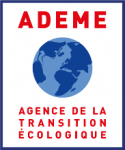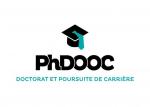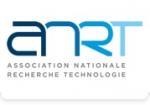Dynamique des protéines associées aux filaments nucléoprotéiques Rad51 - Implication dans la régulation de la recombinaison homologue // Dynamic interplay of Rad51 nucleoprotein filament-associated proteins - Involvement in the regulation of homologous re
| ABG-133654 | Sujet de Thèse | |
| 02/10/2025 | Financement public/privé |
CEA Paris-Saclay
Fontenay-aux-roses
Dynamique des protéines associées aux filaments nucléoprotéiques Rad51 - Implication dans la régulation de la recombinaison homologue // Dynamic interplay of Rad51 nucleoprotein filament-associated proteins - Involvement in the regulation of homologous re
- Biologie
Radiobiologie / Sciences du vivant / Biologie structurale / Sciences du vivant
Description du sujet
La recombinaison homologue (RH) est un mécanisme majeur de réparation des cassures double-brin de l'ADN induites par les radiations ionisantes. Une étape clé de la RH est la formation de filaments nucléoprotéique Rad51 sur l'ADN simple brin généré par ces cassures. Nous avons été les premiers a montré chez la levure qu'un contrôle strict de ces filaments est essentiel afin que la RH n'induise pas elle-même de réarrangements chromosomiques (eLife 2018, Cells 2021, Nat. Commun. 2025). Chez l'homme, les homologues fonctionnels des protéines de contrôle sont des suppresseurs de tumeurs. Ainsi, le contrôle de la RH semble être aussi important que le mécanisme de la RH lui-même. Notre projet implique l'utilisation de nouveaux outils moléculaires permettant une percée dans l'étude de ces contrôles. Nous utiliserons une version fonctionnelle fluorescente de la protéine Rad51 développée pour la première fois par nos collaborateurs A. Taddei (Institut Curie), R. Guérois et F. Ochsenbein (I2BC, Joliot, CEA). Cette avancée majeure nous permettra d'observer l'influence des protéines de contrôle sur la réparation de l'ADN par microscopie dans des cellules vivantes. Nous avons également développé des modèles structuraux très précis des complexes de protéines de contrôle en association avec les filaments Rad51. Nous recourrons à une approche multidisciplinaire basée sur la génétique, la biologie moléculaire, la microscopie, la biochimie et la structure des protéines, pour comprendre la fonction des régulateurs de la formation des filaments Rad51. La description de l’organisation de ces protéines avec les filaments Rad51 nous permettra de développer de nouvelles approches thérapeutiques.
------------------------------------------------------------------------------------------------------------------------------------------------------------------------
------------------------------------------------------------------------------------------------------------------------------------------------------------------------
Homologous recombination (HR) is an important mechanism for the repair of ionizing radiation- induced DNA double-strand breaks. A key step in HR is the formation of Rad51 nucleoprotein filaments on the single-stranded DNA that is generated from these breaks. We were the first to show, using yeast as a model, that a tight control of the formation of these filaments is essential for HR not to induce chromosomal rearrangements by itself (eLife 2018, Cells 2021, Nat. Commun. 2025). In humans, the functional homologs of the yeast control proteins are tumor suppressors. Thus, the control of HR seems to be as important as the mechanism of HR itself. Our project involves the use of new molecular tools that allow a breakthrough in the study of these controls. We will use a functional fluorescent version of the Rad51 protein, developed for the first time by our collaborators A. Taddei (Institut Curie), R. Guérois and F. Ochsenbein (I2BC, Joliot, CEA). This major advance will allow us to observe the influence of regulatory proteins on DNA repair by microscopy in living cells. We have also developed highly accurate structural models of control protein complexes associated with Rad51 filaments. We will adopt a multidisciplinary approach based on genetics, molecular biology, biochemistry, and protein structure to understand the function of the regulators of Rad51 filament formation. The description of the organization of these proteins with Rad51 filaments will allow us to develop new therapeutic approaches.
------------------------------------------------------------------------------------------------------------------------------------------------------------------------
------------------------------------------------------------------------------------------------------------------------------------------------------------------------
Pôle fr : Direction de la Recherche Fondamentale
Département : Institut de biologie François JACOB
Service : IRCM_Institut de recherche en radiobiologie cellulaire et moléculaire
Date de début souhaitée : 01-10-2026
Ecole doctorale : Structure et Dynamique des Systèmes Vivants (SDSV)
Directeur de thèse : MALOISEL Laurent
Organisme : CEA
Laboratoire : DRF/JACOB//SIGRR
URL : https://jacob.cea.fr/drf/ifrancoisjacob/english/Pages/Departments/IRCM/Teams/LRGM.aspx
------------------------------------------------------------------------------------------------------------------------------------------------------------------------
------------------------------------------------------------------------------------------------------------------------------------------------------------------------
Homologous recombination (HR) is an important mechanism for the repair of ionizing radiation- induced DNA double-strand breaks. A key step in HR is the formation of Rad51 nucleoprotein filaments on the single-stranded DNA that is generated from these breaks. We were the first to show, using yeast as a model, that a tight control of the formation of these filaments is essential for HR not to induce chromosomal rearrangements by itself (eLife 2018, Cells 2021, Nat. Commun. 2025). In humans, the functional homologs of the yeast control proteins are tumor suppressors. Thus, the control of HR seems to be as important as the mechanism of HR itself. Our project involves the use of new molecular tools that allow a breakthrough in the study of these controls. We will use a functional fluorescent version of the Rad51 protein, developed for the first time by our collaborators A. Taddei (Institut Curie), R. Guérois and F. Ochsenbein (I2BC, Joliot, CEA). This major advance will allow us to observe the influence of regulatory proteins on DNA repair by microscopy in living cells. We have also developed highly accurate structural models of control protein complexes associated with Rad51 filaments. We will adopt a multidisciplinary approach based on genetics, molecular biology, biochemistry, and protein structure to understand the function of the regulators of Rad51 filament formation. The description of the organization of these proteins with Rad51 filaments will allow us to develop new therapeutic approaches.
------------------------------------------------------------------------------------------------------------------------------------------------------------------------
------------------------------------------------------------------------------------------------------------------------------------------------------------------------
Pôle fr : Direction de la Recherche Fondamentale
Département : Institut de biologie François JACOB
Service : IRCM_Institut de recherche en radiobiologie cellulaire et moléculaire
Date de début souhaitée : 01-10-2026
Ecole doctorale : Structure et Dynamique des Systèmes Vivants (SDSV)
Directeur de thèse : MALOISEL Laurent
Organisme : CEA
Laboratoire : DRF/JACOB//SIGRR
URL : https://jacob.cea.fr/drf/ifrancoisjacob/english/Pages/Departments/IRCM/Teams/LRGM.aspx
Nature du financement
Financement public/privé
Précisions sur le financement
Présentation établissement et labo d'accueil
CEA Paris-Saclay
Pôle fr : Direction de la Recherche Fondamentale
Département : Institut de biologie François JACOB
Service : IRCM_Institut de recherche en radiobiologie cellulaire et moléculaire
Profil du candidat
Génétique, biologie moléculaire, biochimie
Postuler
Fermer
Vous avez déjà un compte ?
Nouvel utilisateur ?
Besoin d'informations sur l'ABG ?
Vous souhaitez recevoir nos infolettres ?
Découvrez nos adhérents
 TotalEnergies
TotalEnergies  CASDEN
CASDEN  ADEME
ADEME  Institut Sup'biotech de Paris
Institut Sup'biotech de Paris  MabDesign
MabDesign  MabDesign
MabDesign  Généthon
Généthon  Nokia Bell Labs France
Nokia Bell Labs France  Laboratoire National de Métrologie et d'Essais - LNE
Laboratoire National de Métrologie et d'Essais - LNE  PhDOOC
PhDOOC  ANRT
ANRT  ASNR - Autorité de sûreté nucléaire et de radioprotection - Siège
ASNR - Autorité de sûreté nucléaire et de radioprotection - Siège  Aérocentre, Pôle d'excellence régional
Aérocentre, Pôle d'excellence régional  CESI
CESI  Groupe AFNOR - Association française de normalisation
Groupe AFNOR - Association française de normalisation  ONERA - The French Aerospace Lab
ONERA - The French Aerospace Lab  SUEZ
SUEZ  Tecknowmetrix
Tecknowmetrix  Ifremer
Ifremer
